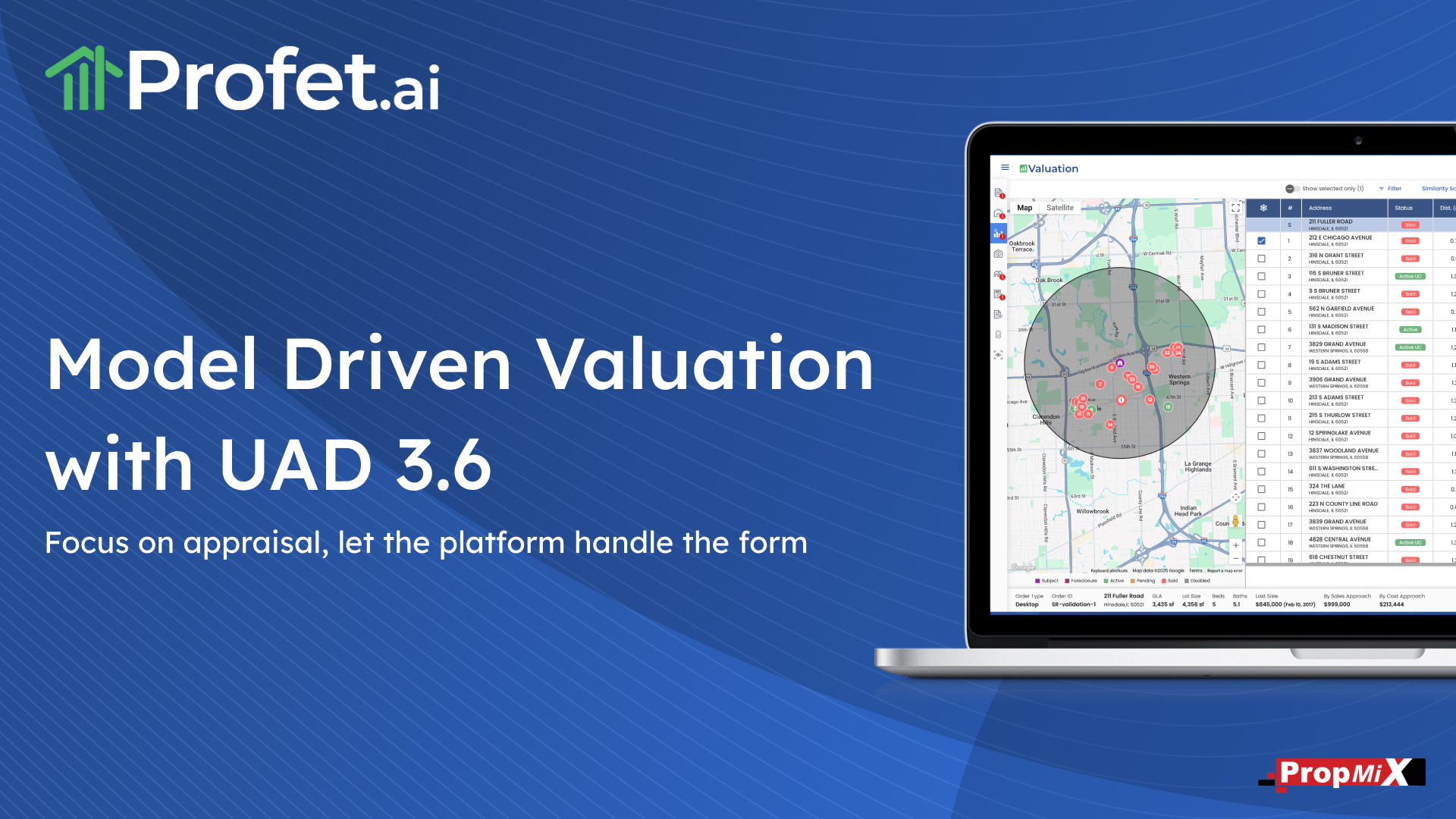Let me try to make a case for what we call – Model Driven Valuation.
For many years now the real estate appraisal industry has been grappling with numerous forms for various different property valuation needs. Talk to any appraiser in the industry and you will hear numbers such as 1004, 1073, 1025, and a lot more. While the forms serve the purpose of ensuring completeness of an appraisal report to be submitted and approved, they do not lend themselves to the process of preparing an appraisal. Let me explain.
The appraisal process followed by every valuation expert trained in USPAP (Uniform Standards of Professional Appraisal Practice) is mostly driven by models. As we know, appraisers primarily work on 3 high level models – a sales comparison model, a cost model, and an income model to finally reconcile and derive a value for a property. But to support their work for each of these high level models, appraisers prepare many additional underlying models. Examples of such models include, paired sales model or a regression model for sales comparison adjustments, a site value extraction model to support the land value in the cost approach or a discounted cash flow model in the income approach. At PropMix, we call such an appraisal process Model Driven Valuation.
Are forms driving the process?
The appraisal form or report to be submitted is the final product of the appraisal process; but filling the form is not the appraisal process in itself. When the focus shifts to filling out the form, which is the final product, we end up stepping away from the process of appraisal and instead may focus on what is required in the form. We lose the opportunity to build a comprehensive model to derive and support an accurate property value. Appraisers are constantly striking this balance between what the form needs versus their professional expertise with the valuation models.
This is like the sausage and the making of the sausage. While we only want the sausage and don’t want to know how it is made, we still need to acknowledge that there is a recipe, a process and the right set of tools to make the sausage long before it is ready to be cased.
And furthermore, the form could end up abstracting the models so much that it can lead to incomplete or inconsistent use of USPAP standards.
Model Driven Valuation & UAD 3.6 in Profet
PropMix’s Profet platform supports the appraiser with model driven valuation with lesser focus on the output form. By ensuring the valuation models are complete and consistent, we can produce any output form as required. We strongly believe that if we provide a platform for the appraiser to use their process, they do not need to focus on the intricacies of the form output and instead they can focus on the appropriate models to use and support their work.
Producing an output form compliant to a client’s needs is the responsibility of the valuation platform and not the appraiser.
The unification of all the forms in UAD 3.6 into a single Uniform Residential Appraisal Report (URAR) is a great step from the GSEs to support the valuation process. It is an awesome point of intersection between our views on model driven valuation and the unification of a single presentation of those models in the URAR. The conditional sections of the URAR are nothing but an artifact of the appraisal process. In addition, the presentation of relevant information together in the URAR makes it highly contextual for the models used for valuation.
When applying model driven valuation to URAR, we prefer to flip our thinking – follow the appraisal process and the models to support your valuation, and the conditionality and contextual presentation of the URAR sections would become a natural by-product of that process. Again, let the platform think about the form and let the appraiser think about their work.
Anyone who has used Profet Valuation would already know our keen focus on usability to support the appraisal process. We look forward to showcasing model driven valuation in the context of URAR as we wrap up our implementation in June 2025.
